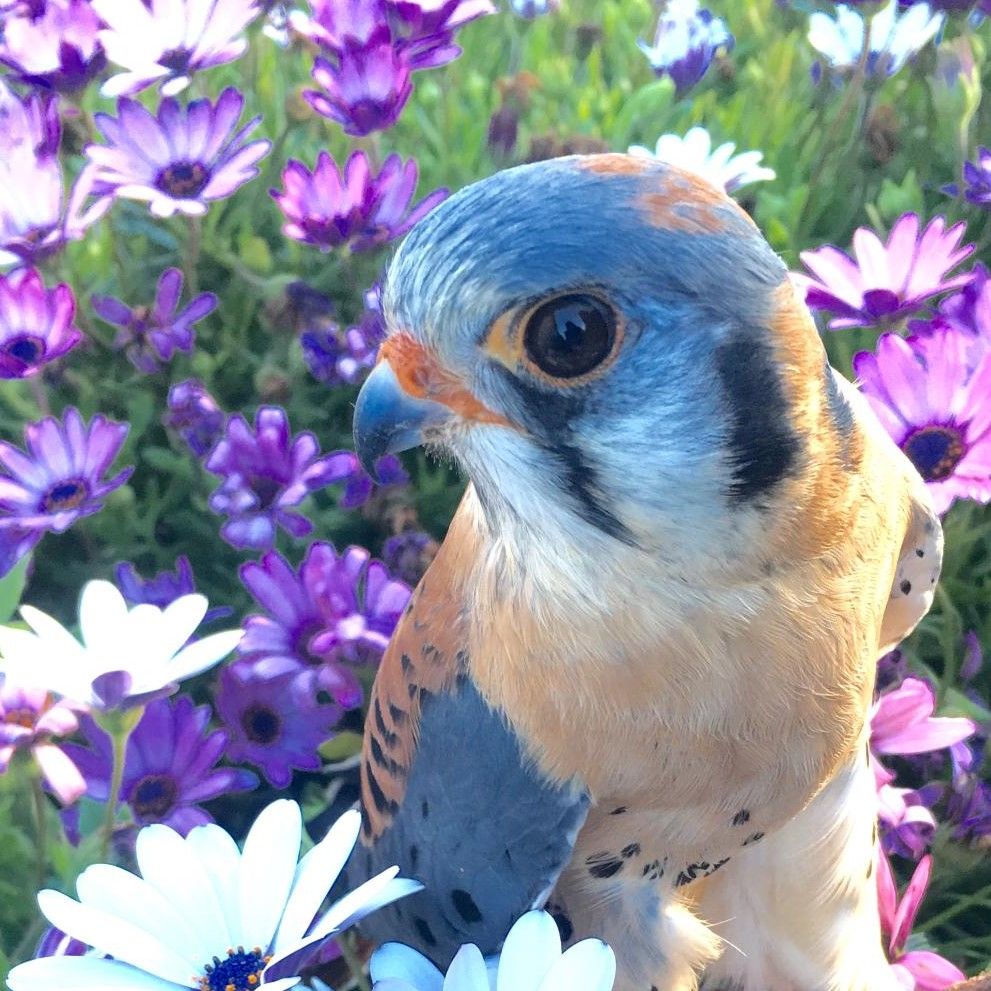Profile | Wiyaca

-
BirthdayMale, hatched circa 2005–2006
-
SpeciesAmerican Kestrel
Falco sparverius -
Professors ofCritical role of small animals in nature
-
Field of StudyUltraviolet vision and eyespots
-
Food and Vet Care$95 per month | $1152 each year
About the species
RANGE | Common in open areas, it ranges throughout North America, including much of Canada and into Alaska. Birds that reside in more northern regions will typically migrate to southern US and northern Mexico.
FUN FACTS | American Kestrels will grab food on the ground, namely grasshoppers and other large insects as well as lizards and mice. They will also hunt small birds, such as sparrows, in flight. This broad diet allows them to successfully inhabit many different areas throughout the Americas. American Kestrels can see ultraviolet light, which is a valuable aid in foraging. In the kestrels' case, the rodents they hunt leave urine trails, which reflect ultraviolet light as they scurry along the ground. These glowing trails, invisible to the human eye, are a sure-fire way for a hungry kestrel to track down a meal.
American Kestrels have two black spots, known as ocelli (“little eyes” in Latin), at the back of their heads. These false "eyes" help protect this little falcon from potential attackers sneaking up from the rear, whether they are predators or mobbing songbirds. American Kestrels also have two vertical black facial markings under their eyes on each side of the head, helping to absorb sunlight and reduce glare.
Meet Wiyaca
A woman w.as in her backyard, having lunch with her baby, when Wiyaca landed on the stroller, hopped onto her lap and began begging for her sandwich. Knowing this was very unusual behavior for a wild bird, she gently put him into a box and took him to a local wildlife center. After examining him, they concluded that there was nothing physically wrong with him, but he was clearly very imprinted on people, probably raised by a person when he was young. Whether or not that person was well-intentioned, or knew having this wild bird as a pet was illegal, the result was the same: Wiyaca had become very dependent on people for his survival. The wildlife center tried to retrain him to hunt and avoid people but it was too late. So, they reached out to us and we became his forever home.
This little bird has the biggest, boldest attitude—as is typical of kestrels. We often hear him yelling at the ravens that fly over, trying to steal bits of food. In his den, he loves to keep company with small stuffed animals that we call his girlfriends. He can be quite vocal in spring, singing to them!
SPECIAL NEEDS | No special needs at this time but we are aware that he is quite old for a kestrel so we are monitoring him for any age-related changes in his health and behavior.
Likes
This little bird absolutely loves small stuffed toys, dragging them around his enclosure in his talons and bringing them into his den. He also enjoys small boxes and tubes that he can reach into to find treats and little toys. He loves when we modify his enclosure by adding things at different levels—swinging and hanging items, shelved and other items that can act as platforms.
Wishlist
-
Durable cat and dog toysby Kong, Vitscan, Hugglehounds, Ho-lee Roller balls, goDog, oneisall, JollyPets, Dogzilla eggs, different shapes/sizes of BoomerBalls, LPHNSUR ToughDogChews, or others made for chewers, especially small items like the hide-and-seek toys by ZippyPaws
-
Packing materialsHeavy duty mailing tubes of various lengths and widths plus packing boxes to fill, as well as small piñatas
-
Plastic chainsfor hanging feeders and toys
-
Travel carrierto leave in enclosure for evac training